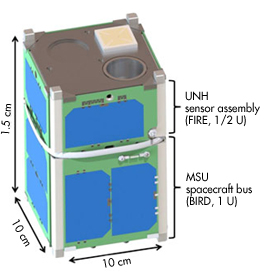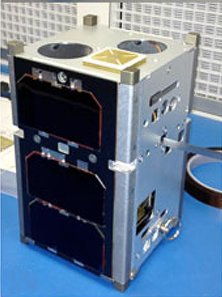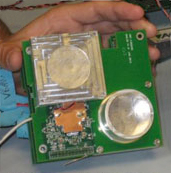FIREBIRD Spacecraft
Two identical 1.5U (10 x 10 x 15cm) CubeSat spacecraft, each weighing up to 2 kg., will be placed into a common high-inclination bead-on-a-string orbit.
Each satellite will carry a two solid-state detctor charged particle sensors with different geometric factors optimized to cover electron measurements over the energy range from 0.25 to ~1 MeV in six differential energy channels.
Detectors are read out by a custom application-specific integrated circuit (ASIC), designed by The Aerospace Corporation, called the Dual Amplifier Pulse Peak Energy Rundown ASIC. Onboard memory stores fast sample observations needed to resolve spatial structure; survey observations identify times of interest to download the highest temporal resolution data within the limited telemetry stream. While all data from the instruments are saved on board for ~4 weeks, FIREBIRD telemeters a reduced event identification data product to the ground each day in order to select particular intervals with microbursts to download for scientific analysis.
The satellites will remain within ~400 km of one another for up to four months, allowing characterization over the spatial scale regime from 10-300 km.
|
||||||||||||||||||||||||||||
|---|---|---|---|---|---|---|---|---|---|---|---|---|---|---|---|---|---|---|---|---|---|---|---|---|---|---|---|---|




